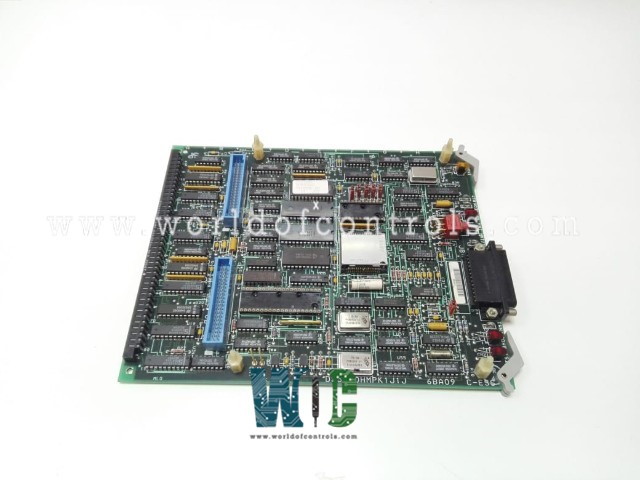
World Of Controls understands the criticality of your requirement and works towards reducing the lead time as much as possible.
DS3800HMPK1N1K - Microprocessor-Based Control Board is available in stock which ships the same day.
DS3800HMPK1N1K - Microprocessor-Based Control Board comes in UNUSED as well as REBUILT condition.
To avail our best deals for DS3800HMPK1N1K - Microprocessor-Based Control Board, contact us and we will get back to you within 24 hours.
SPECIFICATIONS:
Part Number: DS3800HMPK1N1K
Manufacturer: General Electric
Series: Mark IV
Product Type: Microprocessor-Based Control Board
Input Supply Voltage: 15V to 24V DC
Output Signal: 0-10 V DC
Gate Drive Voltage: 15V to 20V
Output Current: ±2A to ±6A
Max Output Channels: 6-12 outputs
Isolation Voltage: 2.5 kV
Power Supply: 110-240 V AC / 24 V DC
Operating temperature: -30 to 55 degrees Celsius
Size: 8.25 cm high x 4.18 cm
Repair: 3-7 days
Availability: In Stock
Country of Origin: United States
FUNCTIONAL DESCRIPTION:
DS3800HMPK1N1K is a Microprocessor-Based Control Board manufactured and designed by General Electric as part of the Mark IV Series used in GE Speedtronic Gas Turbine Control Systems. It integrates a central processing unit (CPU), memory modules (EPROM/EEPROM), interface logic, and communication circuits into a single printed circuit board (PCB). The board is designed to execute real-time control algorithms, process system feedback, and manage signal communication between various subsystems. Its microprocessor core enables high-speed computation, ensuring precise execution of startup, monitoring, regulation, and protection functions.
INSTALLATION:
The board typically features edge connectors or multipin headers that align with a corresponding slot in the rack-mounted system chassis. During replacement, original EPROM chips must be carefully transferred from the previous board to the new unit to retain system-specific configuration and control logic. These non-volatile memory devices store operational firmware and hardware address mappings that are critical for the board’s functionality. Once the board is inserted, retention levers or locking mechanisms should be used to secure it firmly in place, ensuring reliable electrical contact. Upon system reinitialization, onboard diagnostic routines are automatically triggered to verify power delivery, communication readiness, and processor integrity.
OPERATIONS:
The microprocessor executes predefined control algorithms stored in EPROM, ensuring deterministic behavior across all turbine control states—startup, ramp-up, steady-state, and shutdown. Additionally, the board interfaces with other I/O and communication modules via the system’s internal bus architecture, enabling synchronized operations across all control levels. It also includes built-in diagnostic and watchdog circuits that monitor the processor’s cycle execution time and detect any abnormal loop behaviors or signal mismatches. If an error is encountered during execution or input/output communication, the board initiates a controlled fault-handling procedure, which could involve halting turbine operations, activating safety interlocks, or generating alerts to the central control unit.
WOC maintains the largest inventory of replacement parts for GE Speedtronic Turbine Control Systems. Additionally, we offer warranty-backed unused and rebuilt boards as well as board repairs for your damaged ones. For your OEM needs, our team of professionals is available around the clock. We at WOC are happy to help you with any needs you may have in terms of automation. Please contact our team by phone or email for pricing and availability on any components and repairs.
How does the board handle I/O signal processing?
Input signals (analog or digital) are filtered, digitized, and passed through ADC/DAC or opto-isolators before being handled by the microprocessor via peripheral interface chips (e.g., PPI, USART, or memory-mapped I/O).
What type of microprocessor is used in the regulator board?
Most boards use a high-performance 16-bit or 32-bit microcontroller designed for industrial applications. These processors handle real-time control, signal processing, and communication efficiently.
What are the common communication protocols supported?
To facilitate integration with supervisory and control systems, Microprocessor Regulator Boards often support standard industrial communication protocols such as Modbus RTU, Modbus TCP/IP, CANbus, RS-232, RS-485, and sometimes Ethernet/IP. These protocols allow real-time data exchange with PLCs, HMIs, or SCADA systems.